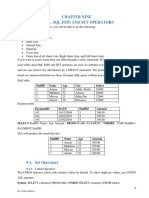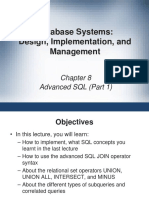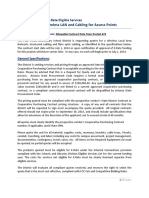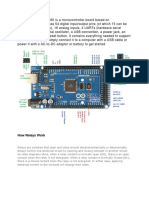0% found this document useful (0 votes)
118 views12 pagesAdvanced SQL for IT Professionals
This document provides an overview of advanced SQL concepts including:
1. Joining multiple tables using queries with JOINs and subqueries to retrieve related data across tables.
2. Different types of JOINs - equijoin, natural join, outer join, and self join - and how to write queries using them.
3. How to write single-row and multiple-row subqueries using different comparison operators depending on if the subquery returns a single row or multiple rows.
4. The document contains examples of JOIN and subquery queries along with explanations and expected results.
Uploaded by
Nestor Adrian LatogaCopyright
© © All Rights Reserved
We take content rights seriously. If you suspect this is your content, claim it here.
Available Formats
Download as PDF, TXT or read online on Scribd
0% found this document useful (0 votes)
118 views12 pagesAdvanced SQL for IT Professionals
This document provides an overview of advanced SQL concepts including:
1. Joining multiple tables using queries with JOINs and subqueries to retrieve related data across tables.
2. Different types of JOINs - equijoin, natural join, outer join, and self join - and how to write queries using them.
3. How to write single-row and multiple-row subqueries using different comparison operators depending on if the subquery returns a single row or multiple rows.
4. The document contains examples of JOIN and subquery queries along with explanations and expected results.
Uploaded by
Nestor Adrian LatogaCopyright
© © All Rights Reserved
We take content rights seriously. If you suspect this is your content, claim it here.
Available Formats
Download as PDF, TXT or read online on Scribd
/ 12


































































































